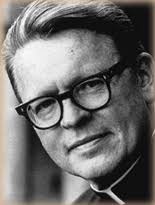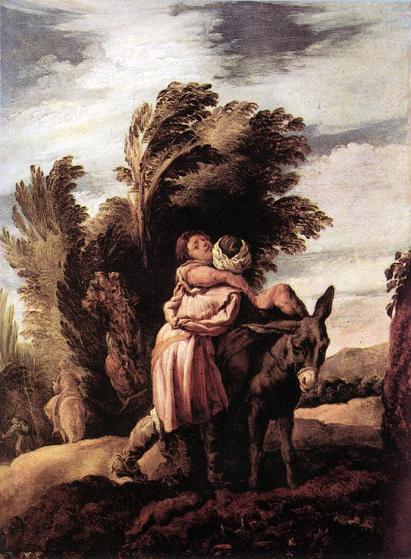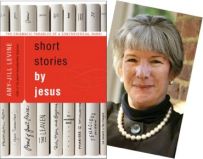By Sister Mary Jo Curtsinger
Mid-July presented us with two kinds of scorching heat that made it hard to breathe; one reported by the weather channel and the other by political newscasts. At the same time, the lectionary presented us with the Gospel of the Good Samaritan from Luke:
On one occasion an expert in the law stood up to test Jesus. “Teacher,” he asked, “what must I do to inherit eternal life?”
“What is written in the Law?” Jesus replied. “How do you read it?”
He answered, “Love the Lord your God with all your heart and with all your soul and with all your strength and with all your mind, and, love your neighbor as yourself.”
“You have answered correctly,” Jesus replied. “Do this and you will live.”
We know this story pretty well, right? The scholar questioned Jesus, yet then answered his own question correctly in describing the heart of revelation as loving God with one’s whole self, and loving the neighbor as oneself. But the scholar couldn’t stop there and asked Jesus this follow-up:
And who is my neighbor?
Imagine a mixed crowd of people in the United States today, listening closely to Jesus’s response to try to catch a political spin. Would his answer to the question be:
“Your neighbors are the migrant peoples desperately running for their lives from their violent homelands…”
Or, maybe they’d be listening for a lead-off reply like:
“Your neighbors are the innocent unborn children in this country, in mortal danger of ever drawing their first breath…”
With either answer, Jesus would lose half the crowd. Today we live in the land of sound bites and snap judgments, rarely waiting for what follows a comma.
But Jesus answered, as he often did, with a story or parable of people who found themselves traveling the same road. One of these people shows us what it looks like when someone lives wholly in love with God, whose nickname is Compassion.
I checked out what eminent scripture scholar Father Raymond Brown (d. 1998) had to say about this parable in his book An Introduction to the New Testament.


Fr. Brown wrote that Jesus’s answer—that is, his telling the story of the Compassionate One on the road—illustrates Jesus’s point that, one can only define the subject of love, not the object.
That is, one can only define the lover, not the ones who are to be loved. Jesus chose a Samaritan to illustrate a person, a subject, whose range of loving is unlimited. So, Jesus is telling us that asking, “who is my neighbor?” is the wrong question. The better one is, “who am I, and who do I want to be?”
Thank you, Fr. Brown.
Let’s take a look at a few more people who have meditated on this story. Consider this artistic interpretation of the parable by 17th century Italian painter Domenico Fetti (d. 1623).

Apparently, Domenico doesn’t want us to spend too much energy on the two figures receding in the lower left corner of the painting – the priest and  the Levite who hurried past. Luke doesn’t actually tell us why, but as Rev. Martin Luther King Jr. once observed, the ones who hurried away may have asked themselves, “If I help this person, what will happen to me?”
the Levite who hurried past. Luke doesn’t actually tell us why, but as Rev. Martin Luther King Jr. once observed, the ones who hurried away may have asked themselves, “If I help this person, what will happen to me?”
In Jesus’s parable, the compassionate Samaritan asked, “If I don’t help this person, what will happen to him?”
Clearly the Samaritan and the object of his mercy are front and center. Domenico seems to want us to look into the eyes of the one who has been saved from the ditch, because it is his eyes we can see. The face of the merciful helper is not revealed.
 Where is the rescued person’s gaze at the moment he’s hoisted to safety? At first I thought he was looking straight at me, trying to catch my eye. But then I wasn’t sure…maybe his gaze is unfocused, sort of lost in utter amazement that he was suddenly given hope again, and surprised that his life has been given back to him.
Where is the rescued person’s gaze at the moment he’s hoisted to safety? At first I thought he was looking straight at me, trying to catch my eye. But then I wasn’t sure…maybe his gaze is unfocused, sort of lost in utter amazement that he was suddenly given hope again, and surprised that his life has been given back to him.
Can we dare to put ourselves in the place of this vulnerable one? To realize that we too are this vulnerable when alone, and to feel the wonder and gratitude of, “…I once was lost but now am found”?
What about the figure of the Samaritan, whose face we cannot see? We know that the hearers of Jesus parable looked down their noses at Samaritans; they were traitors, hated foreigners, enemies.
But Jesus’s listeners didn’t really know any Samaritans personally. They would hardly let their eyes meet those of Samaritans, much less ask the 1st century equivalent of, “How’s it going?”
 Let’s hear from Dr. Amy Jill Levine, a Jewish scholar of the New Testament. She notes in her book, Short Stories by Jesus, that, not only does the Samaritan feel the pain of the wounded one in his gut (compassion), he allows himself to be inconvenienced by time-consuming, resource-depleting action. That is, he showed mercy.
Let’s hear from Dr. Amy Jill Levine, a Jewish scholar of the New Testament. She notes in her book, Short Stories by Jesus, that, not only does the Samaritan feel the pain of the wounded one in his gut (compassion), he allows himself to be inconvenienced by time-consuming, resource-depleting action. That is, he showed mercy.
I turn to a final interpreter of this Christian tradition, to the Jesuit priest who was living in neighboring France during part of Domenico’s day. He is none other than the one who co-founded the Sisters of St. Joseph (along with our first 6 sisters) in 1650, Fr. Jean Pierre Médaille.
 Fr. Jean Pierre reiterated Jesus’ teaching that we are to love God and neighbor without distinction. If you’ve heard this before, what is your understanding of it? That when you’re loving your neighbor, you’re loving God?
Fr. Jean Pierre reiterated Jesus’ teaching that we are to love God and neighbor without distinction. If you’ve heard this before, what is your understanding of it? That when you’re loving your neighbor, you’re loving God?
Or,
That you are to love all neighbors as you love God without distinction? That every neighbor, every person, is to be loved as much as any other neighbor or person?
Fr. Médaille headed off the red herring-question of, “Who is my neighbor?” by his choice of words. In his original French, he referred to the neighbor as la prochaine, which means “the next one.” That is, the neighbor is the next one you encounter, or the one who is right next to you.
Consider one of Fr. Médaille’s maxims, one that reflects Jesus’s teaching on compassion: “Interpret another person’s actions in the best possible light.” Many of us sisters would tell you, it’s one of the most challenging to heed in everyday life.
Sisters and associates of St. Joseph have inherited the Ignatian spirituality of being “contemplatives in action.” The scholar in Luke’s gospel seemed to get it: that compassion (a feeling) and mercy (an action) are Jesus’s teaching. And so, that’s our call: to open ourselves to feel the gut-wrenching needs of the ones we encounter, and to act with mercy in response.
But where to start? With whom? How?
God revealed the answer in Deuteronomy (30:10-14) which tells us to fear not, the command is not too mysterious or remote for you. The Word of life is something very near to you, already in your mouths and in your hearts, you have only to carry it out.
When we need help, we look to God whose range of loving is unlimited. The Spirit gathers us at Eucharist and elsewhere to remember and know the One who lifts us up and pours the wine of compassion over our wounded hearts, and anoints us with the oil of mercy… so that we might go and do likewise.
About the Author

Sister Mary Jo Curtsinger, CSJ, holds a Master of Divinity (M.Div.) degree from Catholic Theological Union (CTU) in Chicago where she later served as the director of the Biblical Study and Travel Program. She was received as a candidate for vowed membership with the Congregation of St. Joseph in 2002 and professed final vows in 2011. She taught theology courses at Nazareth Academy in La Grange Park (a sponsored ministry of the Congregation), and now serves as Co-Director of Vocations Ministry for the Congregation.


Thank you, Sister. Your post talked to me because before I joined the Catholic Church I was a Baptist. The foundation of that faith to me was that God came looking for me and when I said yes, to Him, He came in and gave me new Life.
And part of that new Life is to care for those in need.
LikeLike
Thank you for your comment, Marilyn!
LikeLike
What an excellent reflection, Mary Jo! Indeed, let us all go and do likewise.
LikeLike
Thank you, Sallie!
LikeLike
So Beautiful Mary Jo, our world needs to heed these words.
David
LikeLike
Thank you, David!
LikeLike
Thank you, Mary Jo. It was so good to hear your reflection at Mass on “Good Samaritan Sunday,” and now to read it and let it sink in again. You’ve given us much to ponder and heed.
LikeLike
Thank you!
LikeLike
Thank you for exploring and expanding the concept of neighbor; also that each of us is at some time the neighbor being “rescued!”
LikeLike
Thank you, Theresa!
LikeLike
Great reflection Mary Jo! I could also add that our dear neighbors are those who think and act differently than I do! The challenge is to love them too because all are God’s beloved children.
LikeLike
A good point Ily! Thank you!
LikeLike
Totally rocked the reflection on the Good Samaritan, Mary Jo! I was inspired by your peronal thoughts and the research you did to share the thoughts of others on this subject. Will think of you while taking a dip on retreat.
LikeLike
Thank you, Rosemary!
LikeLike
Thank you so very much. I began reading and could not stop. Because these very powerful message touched my heart, I read it again. And now…
Hope…💖✨
LikeLike
Thank you, Judith
LikeLike